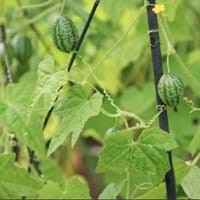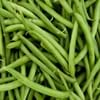Life Span
Annual
Perennial
Type
Vegetable
Flowering Plants, Fruits, Trees
Origin
Central America, Mexico
Anatolia, Asia, Europe, Iran, Maghreb, Morocco, Norway, The Hiamalayas
Types
Slicing, Pickling and burpless
Flowering Cherries, Sour Cherries, Sand Cherries, Sweet Cherries, Capulin Cherries
Habitat
Floodplains, Wet forest
Forest edges, Wild, Woods
USDA Hardiness Zone
7-8
4-8
Sunset Zone
A3, H1, H2, 1a, 1b, 2a, 2b, 3a, 3b, 4, 5, 6, 7, 8, 9, 10, 11, 12, 13, 14, 15, 16, 17, 18, 19, 20, 21, 22, 23, 24
4, 5, 6, 7, 15, 16, 17
Habit
Vining/Climbing
Upright/Erect
Flower Color
Yellow, Gold
White
Flower Color Modifier
Bicolor
Not Available
Leaf Color in Spring
Light Green
Dark Green
Leaf Color in Summer
Green, Dark Green
Orange
Leaf Color in Fall
Green, Dark Green, Yellow green
Orange
Leaf Color in Winter
Not Available
Orange
Leaf Shape
Heart-shaped
Oblong
Plant Season
Summer, Fall
Spring, Summer
Sunlight
Full Sun, Partial Sun
Full Sun, Partial shade
Growth Rate
Very Fast
Medium
Type of Soil
Loam
Loamy, Well drained
The pH of Soil
Neutral
Slightly Acidic
Soil Drainage
Well drained
Average
Bloom Time
Early Summer, Summer, Late Summer, Early Fall, Indeterminate
Early Spring, Spring
Tolerances
Drought
Heat And Humidity, Not Available
Where to Plant?
Container, Ground
Ground
How to Plant?
Seedlings, Stem Planting
Grafting, Seedlings, Transplanting
Plant Maintenance
Medium
Medium
Watering Requirements
Keep ground moist, Requires a lot of watering, Requires regular watering, Requires watering in the growing season
Never Over-water, Over-watering can cause leaf problems or root diseases, Prefer drip-irrigation instead of Over-head watering, Water twice a day in the initial period
In Summer
Lots of watering
Lots of watering
In Spring
Moderate
Moderate
In Winter
Average Water
Average Water
Soil pH
Neutral
Slightly Acidic
Soil Type
Loam
Loamy, Well drained
Soil Drainage Capacity
Well drained
Average
Sun Exposure
Full Sun, Partial Sun
Full Sun, Partial shade
Pruning
Prune after flowering, Remove shoots
Don't prune in the fall, Prune if you want to improve plant shape, Prune in late winter, Remove dead or diseased plant parts, Remove deadheads
Fertilizers
Compost, organic fertlizers
All-Purpose Liquid Fertilizer
Pests and Diseases
Bacteria wilt, Fungal Diseases, fungus, Fusarium wilt, Leaf spot, Striped cucumber beetles
Aphids, Bacterial Canker, Black Knot, Brown Rot, Caterpillars
Plant Tolerance
Cold climate
Drought
Flower Petal Number
Single
Not Available
Foliage Texture
Coarse
Not Available
Foliage Sheen
Matte
Not Available
Attracts
Ants, Birds, Flying insects, Insects, Rats, Squirrels
Birds
Allergy
Throat itching, Vomiting
Swelling in the face
Aesthetic Uses
Showy Purposes
Showy Purposes
Beauty Benefits
Not Available
Not Available
Environmental Uses
Food for animals, Food for birds
Air purification
Medicinal Uses
Antioxidants, Combats Stress, Fiber, Improve heart health, Indigestion, Inflammation, Rich in Iron
Arthritis, Gout, Kidney problems, Rheumatoid arthritis, Swelling
Part of Plant Used
Fruits, Seeds
Flowers, Fruits
Other Uses
Used As Food, Used as Ornamental plant, Used for its medicinal properties
Wood is used for making furniture
Used As Indoor Plant
Yes
No
Used As Outdoor Plant
Yes
Yes
Garden Design
Edible, Herb / Vegetable, Vine
Not Available
Botanical Name
MELOTHRIA scabra
Prunus avium
Common Name
Mexican Sour Gherkins, cucamelon
Cherry Tree
In Hindi
Mousemelon
चेरी का पेड़
In German
Maus Melone
Kirschbaum
In French
Mousemelon
Cerisier
In Spanish
Mousemelon
Cerezo
In Greek
πεπόνι ποντίκι
κερασιά
In Portuguese
melão rato
árvore de cereja
In Polish
mysz melona
wiśniowe drzewo
In Latin
mouse melon
Cherry
Phylum
Tracheophyta
Magnoliophyta
Class
Magnoliopsida
Magnoliopsida
Order
Cucurbitales
Rosales
Family
Cucurbitaceae
Rosaceae
Clade
Angiosperms, Eudicots, Rosids
Angiosperms, Eudicots, Rosids
Tribe
Melothrieae
Not Available
Subfamily
Cucurbitoideae
Not Available
Number of Species
Not Available
Not Available
Season and Care of Mouse Melon and Cherry Tree
Season and care of Mouse Melon and Cherry Tree is important to know. While considering everything about Mouse Melon and Cherry Tree Care, growing season is an essential factor. Mouse Melon season is Summer and Fall and Cherry Tree season is Summer and Fall. The type of soil for Mouse Melon is Loam and for Cherry Tree is Loamy, Well drained while the PH of soil for Mouse Melon is Neutral and for Cherry Tree is Slightly Acidic.
Mouse Melon and Cherry Tree Physical Information
Mouse Melon and Cherry Tree physical information is very important for comparison. Mouse Melon height is 15.20 cm and width 180.00 cm whereas Cherry Tree height is 17.50 cm and width 17.50 cm. The color specification of Mouse Melon and Cherry Tree are as follows:
Mouse Melon flower color: Yellow and Gold
Mouse Melon leaf color: Light Green
Cherry Tree flower color: White
- Cherry Tree leaf color: Dark Green
Care of Mouse Melon and Cherry Tree
Care of Mouse Melon and Cherry Tree include pruning, fertilizers, watering etc. Mouse Melon pruning is done Prune after flowering and Remove shoots and Cherry Tree pruning is done Don't prune in the fall, Prune if you want to improve plant shape, Prune in late winter, Remove dead or diseased plant parts and Remove deadheads. In summer Mouse Melon needs Lots of watering and in winter, it needs Average Water. Whereas, in summer Cherry Tree needs Lots of watering and in winter, it needs Average Water.





